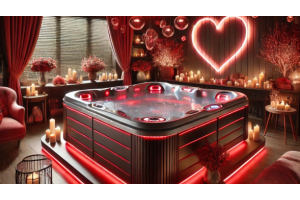What is the best type of hot tub insulation?

The type of insulation in the hot tub will significantly affect the running costs and your energy bill. The best type of insulation in the hot tub can depend on build quality, alongside your specific needs, including energy efficiency, climate, and budget considerations. All hot tubs will also need a good quality insulated cover, which we'll cover in another article called 'What are the best types of covers for my hot tub?'. You could consider buying a heat pump for your hot tub to reduce your running costs and energy bills.
1. Triple Insulation:
This is a combination of Partial Foam Insulation (3) on the shell, Reflective Insulation on the inside of the cabinet and Thermal Wrap (4) Insulation between the cabinet and the Reflective Insulation (5).
This type of insulation offers a balance between insulation and accessibility to the hot tub's components for maintenance.


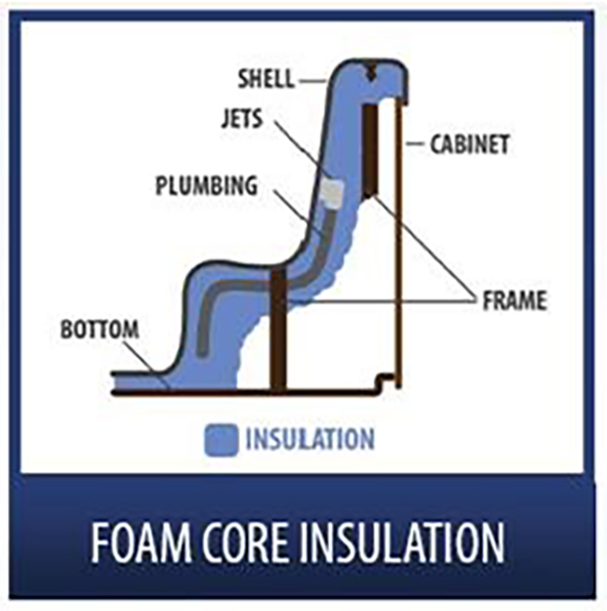



2. Full Foam Insulation:
This method involves filling the entire cabinet with polyurethane foam. It provides excellent thermal insulation, leading to lower energy costs and keeping the water warmer for longer periods.
Full foam also offers structural support to the plumbing, reducing vibration and noise.
However, if there is a leak or a fault with the pipework, finding and resolving the problem can prove very difficult and costly – plus the original integrity of the insulation is compromised.
3. Partial Foam Insulation:
In this approach, foam is applied to certain critical areas of the hot tub, such as the shell and plumbing lines.
This can be less expensive than full foam and still effective.
This type of insulation is not considered as efficient as triple insulation or full foam in terms of energy savings.
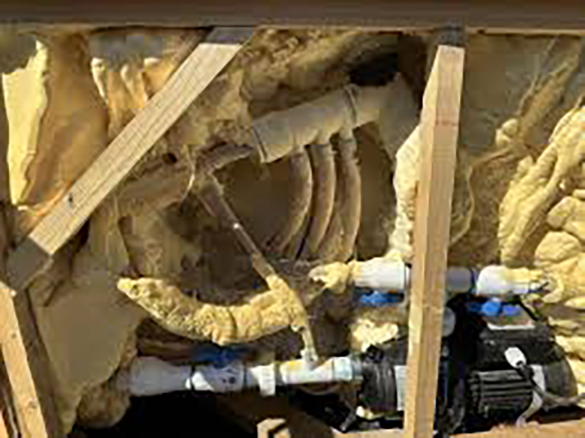

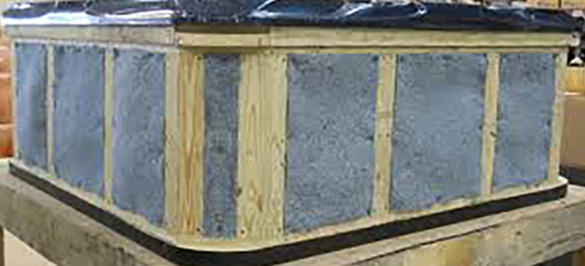

4. Fiberfill or Thermal Wrap:
This method uses a blanket-like material that reflects heat back into the tub.
It can be easier to access and service plumbing than fully foamed models.
This type is often used in conjunction with other insulation methods and on its own is not considered an efficient insulation system in UK temperature through the autumn and winter – say between 53°F (12°C), with lows around 36°F (0°C).
5. Reflective Insulation:
Reflective materials are designed to reflect radiant heat back into the hot tub.
This is often used in combination with other types of insulation for added efficiency.
This type is often used in conjunction with other insulation methods and on its own is not considered an efficient insulation system in UK temperature through the autumn and winter – say between 53°F (12°C), with lows around 36°F (0°C).
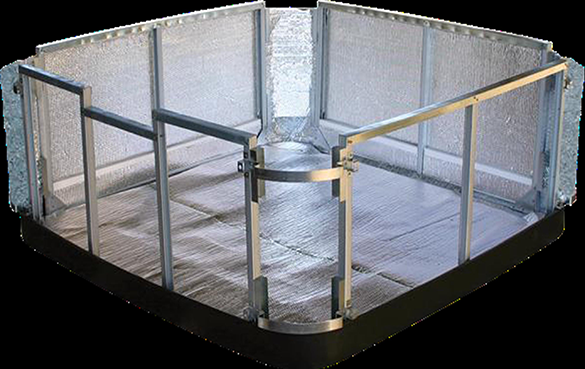

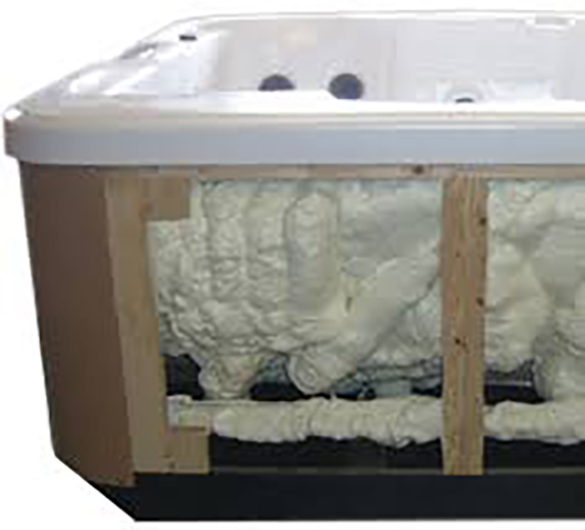

6. Spray Foam:
Some models use a spray-on foam that can be less dense than full foam, offering a balance between insulation and accessibility to the hot tub's components for maintenance.
This type is often used in conjunction with other insulation methods and on its own is not considered an efficient insulation system in UK temperature through the autumn and winter – say between 53°F (12°C), with lows around 36°F (0°C).
When choosing the insulation type, consider the climate in which you live or where you are locating your hot tub. For example, in colder climates, triple Insulation and full foam insulation might be more beneficial due to better energy efficiency. It's also important to look for a quality hot tub cover, as a significant amount of heat can escape from the top.
Lastly, researching consumer reviews and consulting with a reputable dealer can also help you choose the best insulation type for your specific needs.




